Removable Orthodontic Retainers
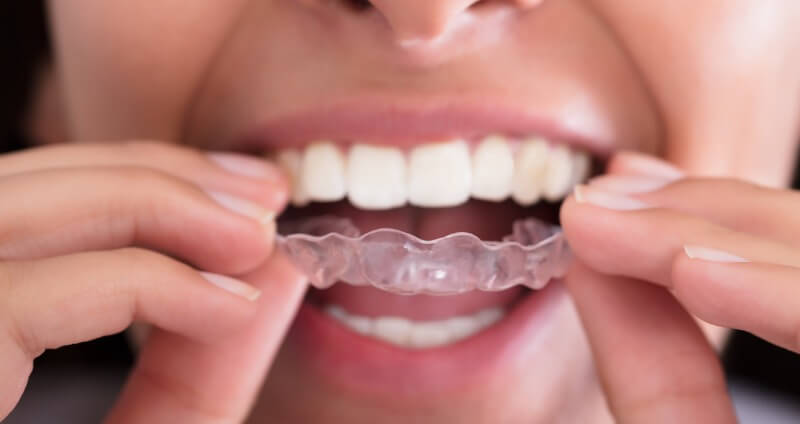
What Are Removable Orthodontic Retainers?
Whether you’ve had braces or Invisalign clear aligners, achieving that beautiful, straight smile is an exciting achievement. Now, as you move on to the next phase of your dental journey, your dentist or orthodontist may recommend the use of removable orthodontic retainers to help maintain the results you’ve worked so hard to achieve.
Removable orthodontic retainers are custom-made dental appliances designed to keep your teeth in their newly aligned positions. After the active phase of orthodontic treatment, where braces or aligners are used to move teeth into the desired places, it’s crucial to wear retainers to prevent your teeth from shifting back to their original positions over time. While the bones and tissues around your teeth stabilize, retainers play a vital role in ensuring the long-term success and stability of your orthodontic treatment.
Before you deciding on whether Removable Orthodontic Retainers are right for you, there are some things you should know:
- Who Needs Removable Orthodontic Retainers?
- What Are The Advantages Of Removable Orthodontic Retainers?
- What Are The Alternative Treatments If I Do Not Choose Removable Orthodontic Retainers?
- How Much Does Removable Orthodontic Retainers Cost?
- What Are The Steps In The Removable Orthodontic Retainers Procedure?
- Can I Have Removable Orthodontic Retainers If I Am Pregnant?
- How Long Does Removable Orthodontic Retainers Last?
- What Are Common Problems with Removable Orthodontic Retainers?
If you have any further questions about Removable Orthodontic Retainers or other dental services offered at Atlas Dental, please contact us.

Free phone consultation
Have questions about Removable Retainers? Schedule a free phone consultation with our Toronto dentist.

5 star google reviews
Our patients love us! See for yourself why more and more people are choosing Atlas Dental for their Removable Retainers.

Removable Retainer Replacement
Need a replacement Removable Retainer made fast in Toronto? Book Online.
Who Needs Removable Orthodontic Retainers?
After completing orthodontic treatment, regardless of whether you’ve had traditional braces or Invisalign clear aligners, wearing removable orthodontic retainers is a crucial step for nearly every patient. The truth is that teeth have a natural tendency to shift back to their original positions, even after months or years of orthodontic work. Without consistent retention, the beautiful results achieved through braces or aligners can be at risk of diminishing over time.
Here are some key points to consider regarding who needs removable orthodontic retainers:
- Recent Orthodontic Patients: If you’ve recently finished your orthodontic treatment and had braces or aligners to straighten your teeth, wearing retainers is usually part of the standard treatment plan. Your orthodontist will discuss the importance of retention with you during your treatment, explaining the role retainers play in maintaining the new alignment of your teeth.
- Patients with Minor Tooth Movement: Even individuals who have had minor orthodontic work may benefit from using removable retainers. Whether you had minor crowding or spacing issues, retainers can help ensure the teeth remain stable and don’t revert to their previous positions.
- Growing Teenagers: Adolescence is a time of significant growth and change for the body, including the teeth and jaws. As a result, teenagers who have completed their orthodontic treatment might be advised to use retainers to keep their teeth aligned while their jawbones mature and stabilize.
- Adults Undergoing Orthodontic Treatment: It’s never too late to improve your smile, and many adults choose to undergo orthodontic treatment later in life. For adult patients, retainers are just as essential as they are for younger individuals, helping to maintain the results achieved through braces or aligners.
- Individuals with a History of Orthodontic Relapse: Some people may have had orthodontic treatment in the past but failed to use retainers as recommended. If you experienced relapse, where your teeth shifted back after previous treatment, retainers are particularly crucial to prevent it from happening again.
In essence, removable orthodontic retainers are prescribed to almost all orthodontic patients, regardless of age or the complexity of their initial treatment. The commitment to wearing retainers as directed by your orthodontist is an investment in the long-term success of your orthodontic journey, ensuring that your beautiful smile remains intact and healthy for years to come. In the next section, we’ll explore the different types of removable orthodontic retainers available and how they work to keep your teeth in their desired positions. If you have further questions about Removable Orthodontic Retainers, please contact us.
What Are The Advantages Of Removable Orthodontic Retainers?
Removable orthodontic retainers offer several significant advantages that make them a popular choice for maintaining the results of orthodontic treatment. These custom-made appliances, typically made of clear plastic or acrylic material, provide a range of benefits that go beyond just preserving your newly aligned smile. Let’s explore some of the advantages of using removable orthodontic retainers:
- Retain Teeth Alignment: The primary purpose of orthodontic retainers is to hold your teeth in their new positions after the active phase of orthodontic treatment. By consistently wearing retainers as directed by your orthodontist, you can significantly reduce the risk of your teeth shifting back to their original misaligned state.
- Aesthetically Pleasing: Removable orthodontic retainers are often made from transparent materials, making them discreet and hardly noticeable when worn. Unlike traditional braces, retainers allow you to maintain your post-treatment smile without drawing much attention to the fact that you’re wearing them.
- Comfortable and Non-Invasive: Retainers are generally comfortable to wear, as they are custom-designed to fit the unique contours of your mouth. Since they are removable, you can take them out while eating, brushing your teeth, or for special occasions, making them convenient and non-invasive.
- Improved Speech: Unlike some orthodontic appliances that can temporarily affect speech during treatment, removable retainers typically do not interfere with speech once you get used to wearing them. This means you can confidently communicate without any noticeable speech impediments.
- Easy Oral Hygiene: Maintaining good oral hygiene is vital for overall dental health. With removable orthodontic retainers, you can easily clean your teeth by removing the appliance before brushing and flossing. Cleaning the retainers themselves is also relatively simple, using a soft toothbrush and non-abrasive toothpaste.
- Flexibility in Wear Time: Your orthodontist will provide specific guidelines on how often you should wear your removable retainers. In many cases, the initial wear schedule is more rigorous and gradually tapers off as time goes on. This flexibility allows you to adjust to wearing retainers while ensuring their effectiveness.
- Ideal for Athletes and Musicians: Removable orthodontic retainers are popular among athletes and musicians who may require a mouthguard or need to play certain instruments without obstruction. Being able to take out the retainer during these activities adds to their convenience.
- Prevents Costly Retreatment: By faithfully wearing your retainers, you can avoid the need for costly retreatment due to orthodontic relapse. Regular use of retainers ensures that your investment in orthodontic treatment is maintained over the long term.
Removable orthodontic retainers provide a host of advantages that go beyond simply preserving the results of your orthodontic treatment. They offer comfort, discretion, and flexibility while ensuring that your teeth remain beautifully aligned and healthy. Following your orthodontist’s post-insertion instructions regarding retainer wear and care will maximize the benefits and ensure the lasting success of your smile transformation. In the following section, we will delve into the different types of removable orthodontic retainers available to help you make an informed choice for your dental needs. If you have further questions about Removable Orthodontic Retainers, please contact us.
What Are The Alternative Treatments If I Do Not Choose Removable Orthodontic Retainers?
Choosing not to use removable orthodontic retainers after completing your orthodontic treatment can have significant consequences for the long-term stability of your newly aligned smile. While it may be tempting to forgo wearing retainers, especially if they seem inconvenient, it’s essential to understand the potential alternatives and their implications. Here are some of the alternative treatments if you decide not to use removable orthodontic retainers:
- Fixed Retainers: If you’re reluctant to wear removable retainers consistently, your orthodontist may suggest fixed retainers as an alternative. Fixed retainers are thin wires that are bonded to the back surfaces of your teeth, typically applied to the lower front teeth or both upper and lower front teeth. Unlike removable retainers, fixed retainers are not removable by the patient and provide continuous support to prevent teeth from shifting.
- Invisalign Treatment: Invisalign is a clear aligner system that can be used not only for active orthodontic treatment but also as a retention method. Some patients may choose to wear Invisalign retainers, which are similar to the clear aligners used during treatment but designed to keep the teeth in place after the active phase is complete. This option provides a more discrete alternative to traditional removable retainers.
- Regular Orthodontic Check-ups: If you opt against using any type of retainer, it’s crucial to schedule regular orthodontic check-ups with your orthodontist. These visits allow your orthodontist to monitor your teeth and identify any shifts or relapse early on. Catching any potential changes early can help prevent more extensive problems in the future.
- Accepting Potential Relapse: Without some form of retention, your teeth will likely have a higher chance of relapsing, meaning they may gradually shift back towards their original positions over time. This could lead to misalignment and potentially undo the results achieved through your initial orthodontic treatment.
It’s important to remember that each person’s orthodontic needs are unique, and the best course of action should be determined in consultation with your orthodontist. While removable orthodontic retainers offer numerous advantages and flexibility, they might not be the best fit for everyone. Fixed retainers or other alternatives can be considered based on your specific dental situation and preferences. If you have further questions about Removable Orthodontic Retainers, please contact us.
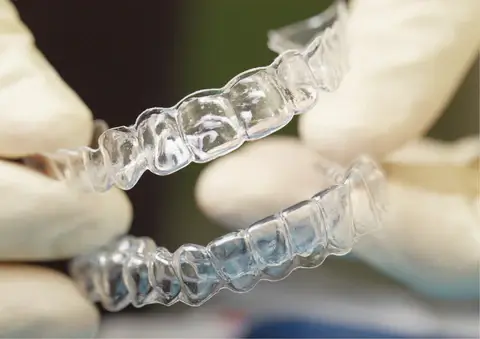
Cost Of Removable Retainers
Patients often choose between Removable Clear Essix Retainers or Cemented Lingual Wire Retainers. These retainers can be made for the top (maxillary) or bottom (mandibular). The costs of removable retainers by a general dentist is around $229 plus dental lab fee (approximately $100). The codes relevant to removable orthodontic retainers in the Ontario Dental Association’s Suggested Fee Guide appear as follows:
Appliances, Removable, Retention
- 83101 Appliances, Removable Retention, Maxillary – $229 plus lab fee (~$100)
- 83102 Appliances, Removable Retention, Mandibular – $229 plus lab fee (~$100)
These fees may be covered by dental insurance plans, but it is important to check with your insurance provider to determine your specific coverage. It is also worth noting that the ODA Fee Guide is a guideline and not a mandatory fee schedule, so dentists and orthodontists may charge more or less than the listed fees depending on their individual practices. At Atlas Dental, our fees are consistent with the ODA Fee Guide.
For patients without dental insurance, Atlas Dental is pleased to offer dental financing through Dentalcard. Affordable payment plans start at 7.95% for terms of 6 months to 6 years. To learn more about Dentalcard dental treatment financing, follow this link.
What Are The Steps In The Removable Orthodontic Retainers Procedure?
Getting your removable orthodontic retainers is a straightforward process that typically follows the completion of your active orthodontic treatment. Your orthodontist will guide you through each step to ensure you receive retainers that fit comfortably and effectively. Let’s walk through the typical procedure involved in obtaining removable orthodontic retainers:
- Consultation and Assessment: The first step is to schedule a consultation with your orthodontist after completing your braces or Invisalign clear aligner treatment. During this appointment, your orthodontist will assess the alignment of your teeth and determine if you need retainers. They will also discuss the importance of retention in maintaining the results of your orthodontic treatment. Please review these pre-visit instructions before your visit.
- Impressions or Digital Scanning: To create custom-made retainers, your orthodontist will take impressions of your teeth or use a digital scanning system. Traditional impressions involve using a putty-like material to capture the exact shape and alignment of your teeth. Digital scanning, on the other hand, uses advanced technology to create a 3D model of your teeth digitally.
- Custom Retainer Design: Using the impressions or digital scans, a dental laboratory will design your custom removable orthodontic retainers. The design process ensures that the retainers fit your teeth precisely, making them comfortable and effective in maintaining your smile alignment.
- Fabrication of the Retainers: Once the design is complete, skilled technicians at the dental laboratory will fabricate your removable orthodontic retainers. The materials used are usually clear plastic or acrylic, ensuring that the retainers are inconspicuous when worn.
- Fitting and Adjustment: Once the retainers are ready, you’ll return to your orthodontist’s office for a fitting. Your orthodontist will make any necessary adjustments to ensure the retainers fit comfortably and securely. They will also provide you with specific instructions on how to wear and care for the retainers.
- Guidance on Wear Schedule: Your orthodontist will provide post-insertion instructions on how often you should wear the retainers. Initially, you may be instructed to wear them full-time, gradually transitioning to wearing them only at night or for a specified number of hours each day. It’s essential to follow these guidelines diligently to achieve the best results.
- Monitoring and Follow-Up: Throughout your retention phase, your orthodontist will schedule follow-up appointments to monitor your progress and assess the effectiveness of the retainers. These appointments provide an opportunity for any necessary adjustments and allow your orthodontist to address any concerns you may have.
- Long-Term Retention: The use of removable orthodontic retainers is a long-term commitment. While the frequency of wear may decrease over time, it’s essential to wear them as directed by your orthodontist to maintain the alignment of your teeth and prevent relapse.
By following these steps and diligently wearing your removable orthodontic retainers as instructed, you can enjoy the benefits of a beautiful and stable smile for many years to come. Remember that every individual’s orthodontic journey is unique, so it’s crucial to maintain regular communication with your orthodontist throughout the retention phase to ensure the best possible outcome. If you have further questions about Removable Orthodontic Retainers, please contact us.
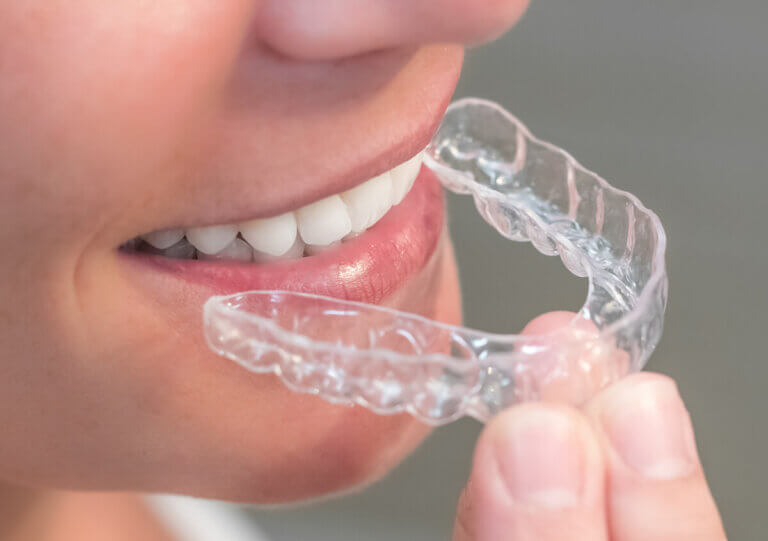
Can I Have Removable Orthodontic Retainers If I Am Pregnant?
Pregnancy is a special time when many aspects of a woman’s health and well-being require careful consideration. If you have recently completed orthodontic treatment or are considering starting treatment while pregnant, you might wonder about the safety and feasibility of using removable orthodontic retainers during this period. Let’s address common concerns and provide guidance on whether you can have removable orthodontic retainers if you are pregnant:
- Safety Considerations: In general, using removable orthodontic retainers during pregnancy is considered safe. These retainers are made from biocompatible materials, such as clear plastic or acrylic, which are unlikely to pose harm to the developing baby or the mother. There have been no reported risks associated with wearing retainers during pregnancy.
- Addressing Pregnancy-Related Dental Changes: During pregnancy, hormonal fluctuations can lead to changes in oral health, such as increased risk of gum disease or tooth decay. Additionally, some pregnant women may experience mild changes in tooth alignment due to the body’s hormone levels and fluid retention. In such cases, using removable orthodontic retainers can be beneficial in preserving the results of previous orthodontic treatment or addressing minor alignment issues.
- Comfort and Fit: It’s essential to ensure that your retainers fit comfortably during pregnancy. Some women may experience mild gum swelling or changes in the shape of their dental arches due to hormonal changes. If you notice any discomfort or changes in how your retainers fit, inform your orthodontist so that they can make adjustments as needed.
- Regular Orthodontic Check-ups: During pregnancy, maintaining regular dental check-ups is essential. Continue to attend scheduled appointments with your orthodontist for follow-up visits and to monitor the effectiveness of your retainers. These visits also allow your orthodontist to make any necessary adjustments to ensure the retainers continue to function optimally.
- Nausea and Vomiting: Morning sickness or nausea is a common symptom during pregnancy. If you experience frequent vomiting, it’s crucial to remove your retainers before doing so to avoid damaging them or causing discomfort to your oral tissues.
- Communication with Your Healthcare Providers: Inform both your orthodontist and your obstetrician about your pregnancy and any treatments you are undergoing, including orthodontic care. This ensures that both healthcare providers can coordinate care and make informed decisions to support your overall health and well-being during pregnancy.
- Flexibility in Retainer Wear Schedule: Pregnancy can be a busy time, and your orthodontist may consider adjusting the wear schedule of your removable retainers to accommodate your changing needs. They can help create a flexible plan that allows you to maintain the benefits of orthodontic treatment while minimizing any potential inconvenience.
Remember that every pregnancy is unique, and individual circumstances may vary. If you have any concerns or questions about using removable orthodontic retainers during pregnancy, don’t hesitate to discuss them with your orthodontist. They can provide personalized guidance and ensure that your orthodontic journey continues to progress smoothly, supporting both your dental health and the well-being of you and your baby. If you have further questions about Removable Orthodontic Retainers, please contact us.
How Long Does Removable Orthodontic Retainers Last?
The longevity of removable orthodontic retainers depends on various factors, including the type of retainer, how well they are cared for, and individual dental circumstances. Generally, with proper maintenance and regular use, removable orthodontic retainers can last for several years. Let’s explore the factors that influence the lifespan of these retainers:
- Material Quality: The quality of the materials used in the fabrication of the retainers plays a significant role in their durability. High-quality materials are less likely to wear down quickly or become damaged over time.
- Regular Wear and Care: Consistently wearing your retainers as directed by your orthodontist is crucial to maintaining the alignment of your teeth. Following the recommended wear schedule is essential, especially during the initial months after orthodontic treatment. Additionally, proper care, such as regular cleaning and avoiding exposure to high temperatures, helps extend the life of your retainers.
- Dental Habits: Certain dental habits, such as teeth grinding (bruxism) or chewing on the retainers, can contribute to their premature wear and tear. If you have a history of bruxism or any other habits that could impact your retainers, inform your orthodontist so they can suggest appropriate measures.
- Changes in Tooth Alignment: Over time, natural changes in your dental alignment may occur due to factors like age or genetics. As your teeth continue to shift subtly, the fit of your retainers may change. Regular orthodontic check-ups will allow your orthodontist to assess any changes and make necessary adjustments to the retainers.
- Replacement and Maintenance: In some cases, removable orthodontic retainers may require replacement due to normal wear or accidental damage. If your retainers show signs of wear or if you experience any discomfort while wearing them, consult your orthodontist for a professional evaluation.
- Individual Dental Factors: Each person’s dental health and biology are unique. Some individuals may experience more significant changes in tooth alignment over time, requiring more frequent adjustments or replacements of their retainers.
It’s essential to understand that the retention phase is a long-term commitment, and retainers are an integral part of maintaining your beautifully aligned smile. Your orthodontist will provide specific post-insertion instructions on how to care for your retainers and how often they should be replaced or adjusted. Regular follow-up appointments with your orthodontist will allow them to monitor the condition of your retainers and make any necessary recommendations. If you have further questions about Removable Orthodontic Retainers, please contact us.
What Are Common Problems with Removable Orthodontic Retainers?
While removable orthodontic retainers are generally reliable and effective, they may encounter certain issues during their use. Understanding these common problems can help you identify potential issues early on and seek timely assistance from your orthodontist. Here are some of the typical problems that may arise with removable orthodontic retainers:
- Wear and Tear: Over time, removable retainers may experience wear and tear due to regular use. The plastic or acrylic material can become worn down, leading to a less precise fit. It’s essential to monitor your retainers for signs of wear and replace them as needed to ensure they continue to hold your teeth in their desired positions effectively.
- Cracks or Breaks: Accidental drops or chewing on the retainers can lead to cracks or breaks in the material. Damaged retainers may not function correctly and could cause discomfort or irritation. If you notice any cracks or breaks in your retainers, contact your orthodontist for replacement.
- Poor Fit: As your teeth naturally shift over time, the fit of your retainers may change. If you experience discomfort or notice gaps between your teeth and the retainer, it could indicate a poor fit. Regular check-ups with your orthodontist allow them to adjust or replace the retainers as needed.
- Discoloration or Odor: Retainers can accumulate plaque and bacteria if not properly cleaned. This may lead to discoloration or the development of an unpleasant odor. Regularly clean your retainers as instructed by your orthodontist to keep them fresh and free from buildup.
- Lost Retainers: Retainers are small and can be easily misplaced or lost, especially when they are taken out during meals or for cleaning. If you lose your retainer, contact your orthodontist promptly to obtain a replacement.
- Allergic Reactions: In rare cases, some individuals may experience allergic reactions to the materials used in the retainers. If you notice any signs of an allergic reaction, such as redness, swelling, or irritation, discontinue use and consult your orthodontist immediately.
- Difficulty Speaking: While most individuals adapt to wearing retainers quickly, some may experience temporary difficulty speaking or producing certain sounds. With practice, these challenges generally resolve as your mouth adjusts to the presence of the retainers.
- Non-Compliance: One of the most significant problems with removable orthodontic retainers is non-compliance, where patients fail to wear the retainers as directed by their orthodontist. Inconsistent wear or not wearing the retainers as prescribed can lead to tooth shifting and a compromised smile alignment.
To ensure the effectiveness of your removable orthodontic retainers and address any potential issues, it’s essential to maintain regular communication with your orthodontist. Attend scheduled check-ups, follow their recommendations for care and wear, and promptly seek their assistance if you encounter any problems with your retainers. By taking proactive steps to address issues, you can continue to enjoy the benefits of a beautifully aligned smile for years to come. If you have further questions about Removable Orthodontic Retainers, please contact us.
We also think you’ll like…
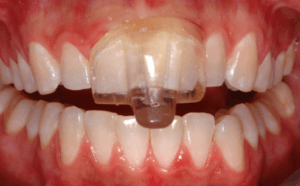
NTI Night Guard
NTI Night Guard What Is An NTI Night Guard? Do you often wake up with headaches, jaw pain, or notice signs of teeth grinding? If
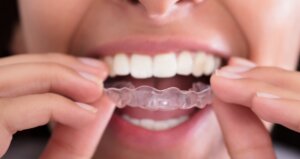
Removable Retainer Pre-Visit Instructions
Removable Retainer Pre-Visit Instructions What You Should Do Before Your Removable Retainer Appointment Removable retainers are made of a clear, plastic tray that fits over
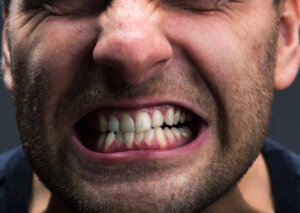
Bruxism
Bruxism What Is Bruxism/Teeth Grinding? Bruxism, also known as teeth grinding, is a condition that affects millions of people worldwide. It is a disorder in
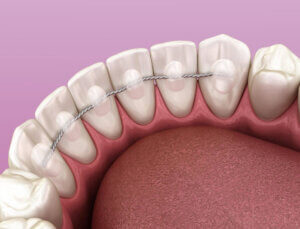
Broken Permanent Retainer
Broken Permanent Retainer What Is A Broken Permanent Retainer? A permanent orthodontic retainer, also known as a lingual wire or fixed retainer, is a type

Dentists see pandemic stress in patients with more teeth grinding, bruxism, damaged teeth
Dentists see more teeth grinding pandemic stress in patients Teeth Grinding Caused By COVID-19 Anxiety Has the COVID-19 pandemic been causing you stress? So much

Fixed Orthodontic Retainers
Fixed Orthodontic Retainers What Are Fixed Orthodontic Retainers? After undergoing braces or other orthodontic procedures to align teeth, it’s essential to maintain the results and

